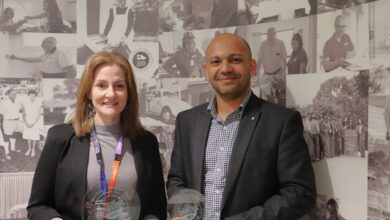Giving students the big picture
The use of high-fidelity manikin simulation is only one way of using simulation in nurse education. Annie May reports.
Where is their bedside manner? That is the question many experienced nurses ask when students or recently trained nurses arrive on the ward.
Issues around lack of time management skills and the ability to perform – and not crack – under pressure are also commonly raised.
These are all skills that can’t be taught out of a text book but are just as valuable as any clinical procedure skill nursing students learn at university. This has led a number of universities to introduce simulation to their courses.
While the use and benefits of using simulation has been widely reported on, the use of low0fidelity simulation to develop nursing students work organisation and people management skills has not.
“People skills and time management are essential for nurses, but can’t be learnt from a text book,” says Jane Warland from the University of South Australia’s School of Nursing and Midwifery.
“We teach them clinical procedures, but that is only half the picture. We need to give them the big picture.
“When they go on their clinical placements or to their first job and have to perform a procedure, they won’t be doing so in a quiet classroom. There will be people coming and going, people asking questions and general chaos that is a feature of many major hospitals.”
Realising this, University of SA implemented a hospital ward simulation workshop.
The primary aim of this workshop is to facilitate student learning of concepts such as time management and other work organisational skills.
“Prior to the development of this topic, concepts such as these were taught merely as theory and the student was expected to make the links to practice themselves. However, this was recognized as out of step with the well known principles of experiential learning,” says Warland.
Describing the workshop in the recent Nurse Education in Practice, Warland says there was no reason to think that the benefits of simulation have to be confined only to high-fidelity manikin simulation. “Requiring the learner to engage with the wide range of professional skills necessary to successfully complete the simulation described in this paper, is fundamentally important to the delivery of safe, effective nursing care.”
For the workshop, the nursing skills laboratories are set up and fully equipped to simulate a six-bed hospital ward.
Groups of 10-13 students undertook three simulation scenarios to enable each student to ‘play’ the role of nurse, patient and an ‘extra’. Each simulation scenario accommodated six ‘patients’ (all with a chronic condition such as asthma and diabetes) and three or four ‘nurses’, with the other students playing the part of an ‘extra’ which could be a doctor, relative, or cleaner.
Whilst the students did use clinical psychomotor skills during the simulations, such as setting up intravenous therapy, and drug administration, they understood that the primary purpose of the simulation was to learn how they manage their time, people and circumstances around them.
The students were allocated a ‘roster’ for the day. This roster was designed to give every student a role in each simulation.
The simulation began with all students listening to a recorded ‘handover.’ This report gave detail of patient diagnosis, reason for admission, length of stay, current condition. Those students who played a nurse then held a short meeting to make a decision about work allocation. Just as they would in real life, they left this meeting with a ‘cheat sheet,’ a prioritized list of things that they want to achieve during their ‘shift’.
Meanwhile, those students who played patients donned a patient gown, identification bracelet and got into a bed. Students playing the nurse then commenced work as if they were in a ward environment. Depending on their prioritization they may have started a drug round, observed and recorded vital signs, or began preparing a patient for theatre. Each of the patients was given a cue card containing some background information as well as timed triggers. This may have been, for example, “wait 10 minutes and then become very agitated and aggressive.”
Each simulation developed and built on the other in ‘real time’ and required the student nurse to respond differently to the patients depending on the circumstances.
“The simulation is designed to be chaotic enough to give them a sense of how to deal with situations when things go pear-shaped,” says Warland.
Nursing students at QUT are also benefiting from this type of simulation.
“We are taking simulation further than clinical procedures and having the broader focus on role development,” says Pauline Calleja from QUT’s School on Nursing and Midwifery.
Similar to University of SA’s program, students take on the role of RN.
“As students they always have someone looking over their shoulder and tend to follow the lead of others, rather than making a decision based on their own knowledge and assessment. This puts them in a situation where they have to make decisions,” says Calleja.
In feedback from students, she says while it is a simulation and not real life, they are still learning a lot.
“We try to make it as close to a real hospital as possible. And they have to do the job of a nurse – not a student. As many found out, something like providing pain relief is so much harder to do when there is no one telling you it is the right thing to do.”
Warland says one student showed the benefits of the workshop in an email she sent several weeks after the workshop, while she was undertaking her clinical placement. She reported that during the simulation day she had thought the kinds of things that occurred in the simulation were unlikely to happen in real life until she subsequently had encountered a chaotic day in her workplace. At this point she recognized the value of the workshop. Her email suggests that students can and do draw on the learning that took place in the workshop when out in the real world.
“It was very busy and I learnt a lot through this experience. It reminded me of the stimulation exercise that we did in a workshop for systems and organization. Throughout the workshop I thought ‘this situation would never happen’. Well it did,” she wrote.
Email: [email protected]





